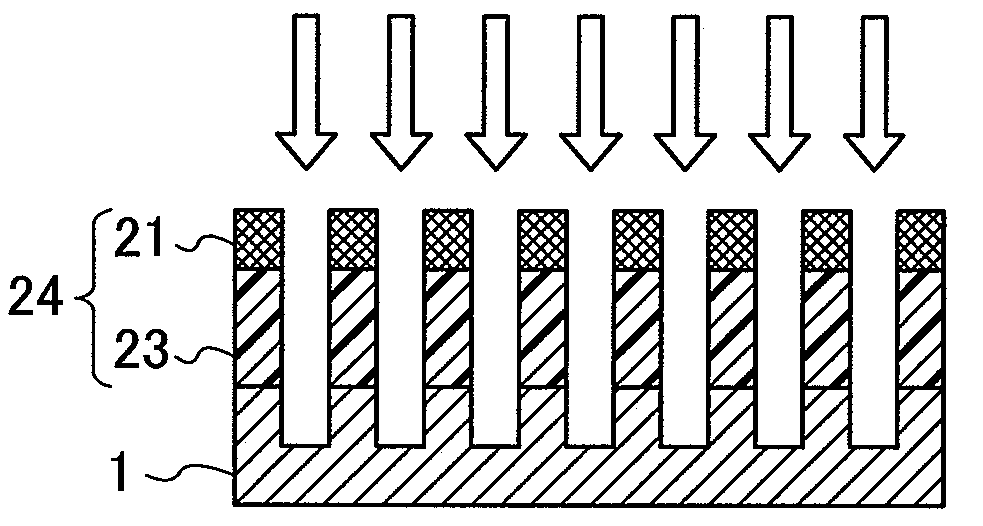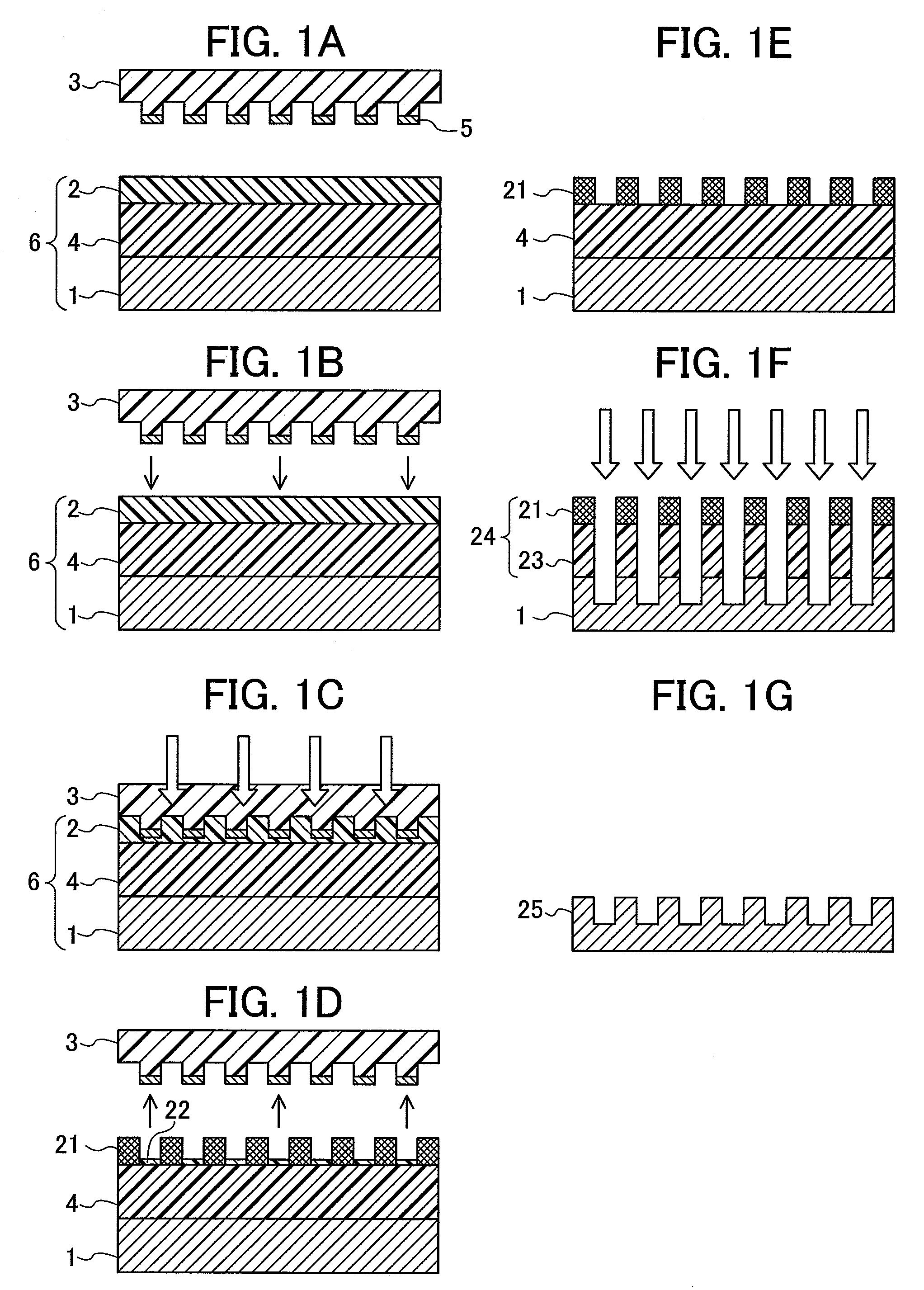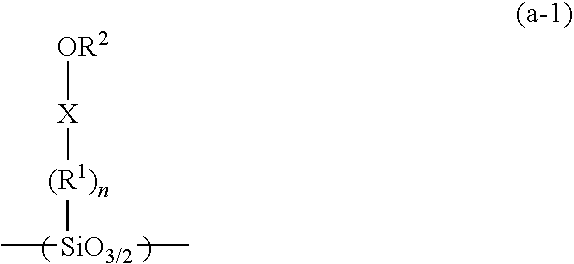Method of forming resist pattern by nanoimprint lithography
a technology of nanoimprint lithography and resist pattern, which is applied in the direction of electric/magnetic/electromagnetic heating, instruments, photomechanical equipment, etc., can solve the problem of shortening the wavelength of light sources and requiring a new expensive exposure apparatus, and achieves the effect of superior etching resistan
- Summary
- Abstract
- Description
- Claims
- Application Information
AI Technical Summary
Benefits of technology
Problems solved by technology
Method used
Image
Examples
examples 1 to 3
[0112]On an 8-inch silicon wafer on which a SiO2 film was formed, a material for forming organic film “TBLC-100” (manufactured by Tokyo Ohka Kogyo Co., Ltd.) was coated, and then baked on a hot plate at 230° C. for 90 seconds, thus forming an organic film of 250 nm in thickness. The chemically-amplified negative resist compositions of examples 1 to 3 shown in Table 1 were applied respectively onto the organic film, and dried by pre-baking (PAB) on a hot plate at 100° C. for 90 seconds, thus forming a resist film of 150 nm in thickness. Thereafter, a mold of light transmissive type, which is partially light-resistant by chrome, was pressed against the resist film, and a KrF excimer laser (248 mm) was irradiated thereon by a KrF exposure device NSR-S203. Subsequently, PEB (post exposure bake) at 110° C. was carried out for 90 seconds, and the mold was released. Then, development was performed at 23° C. for 60 seconds, using an aqueous tetramethylammonium hydroxide (TMAH) solution of 2...
PUM
| Property | Measurement | Unit |
|---|---|---|
| thickness | aaaaa | aaaaa |
| temperature | aaaaa | aaaaa |
| temperature | aaaaa | aaaaa |
Abstract
Description
Claims
Application Information
 Login to View More
Login to View More - R&D
- Intellectual Property
- Life Sciences
- Materials
- Tech Scout
- Unparalleled Data Quality
- Higher Quality Content
- 60% Fewer Hallucinations
Browse by: Latest US Patents, China's latest patents, Technical Efficacy Thesaurus, Application Domain, Technology Topic, Popular Technical Reports.
© 2025 PatSnap. All rights reserved.Legal|Privacy policy|Modern Slavery Act Transparency Statement|Sitemap|About US| Contact US: help@patsnap.com



